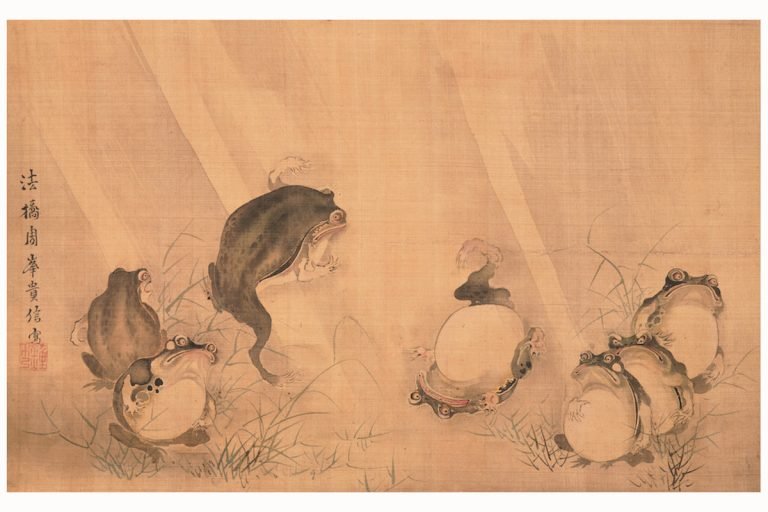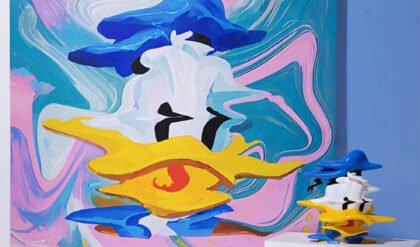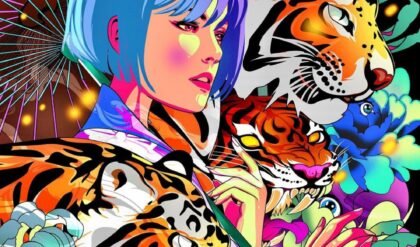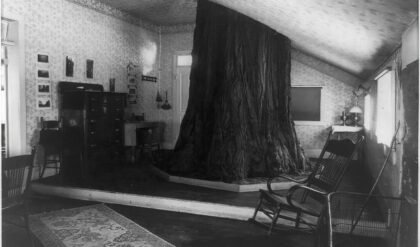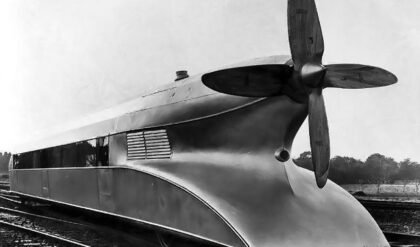Tenjiku Tokubei by Toyokuni III in 1860.
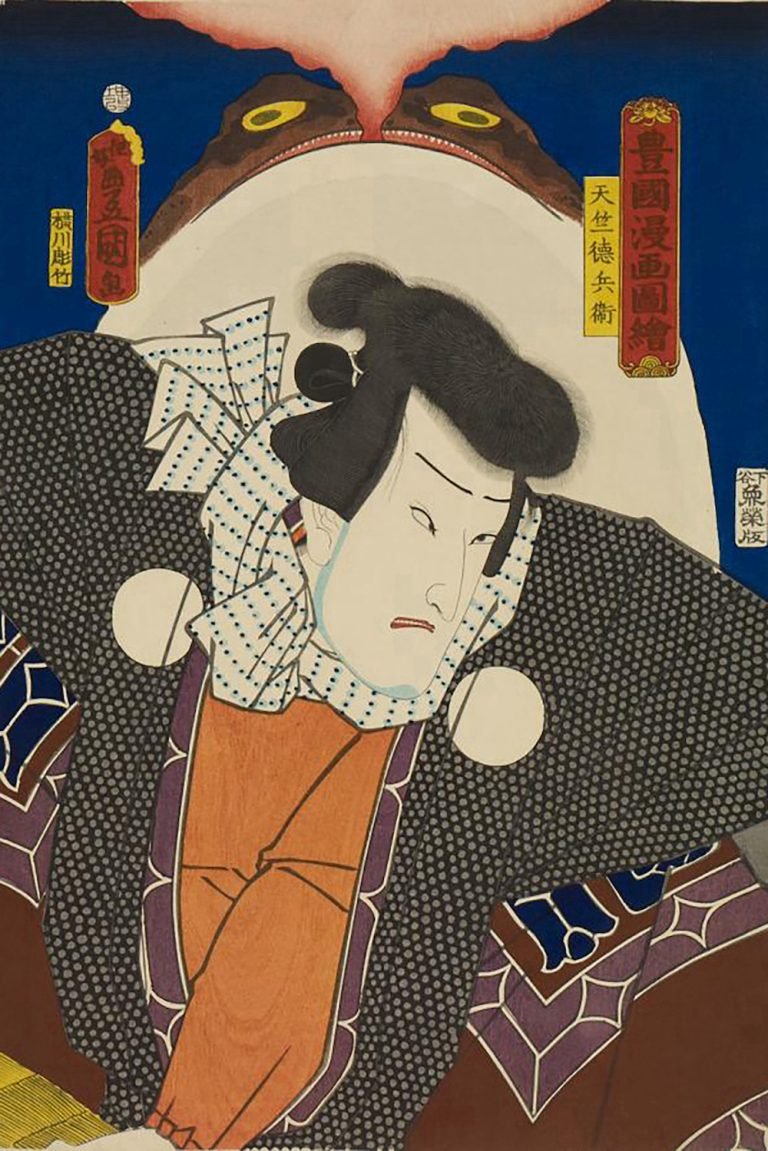
The Japanese term “kimo-kawaii,” which translates to “cute and ugly,” holds a unique cultural significance in the realm of art and folklore. This term is often used to describe anthropomorphic frogs and toads in various artistic expressions. One of the key figures that inspired this aesthetic is Tenjiku Tokubei (1612-1692), a historical figure known for his mystical abilities. In kabuki theater and literature, Tokubei is depicted as a spell-caster capable of transforming stones into giant toads, embodying the essence of “kimo-kawaii.”
Tokubei’s influence extended to the creation of Jiraiya, a legendary ninja character who could summon phantom frogs to aid him in battle. The story of Jiraiya became popular in the folk tale “Katakiuchi Kidan Jiraiya Monogatari,” which was later adapted into kabuki performances and various forms of media. This tale further solidified the association between frogs, magic, and the concept of “kimo-kawaii” in Japanese culture.
During the 19th century, artist Matsumoto Hoji made significant contributions to the depiction of frogs in art through his woodblock prints. Hoji’s intricate and detailed portrayals of frogs captured the whimsical yet mysterious essence of these creatures, further popularizing the fusion of cuteness and ugliness in art. His work added depth and nuance to the portrayal of frogs in Japanese art, influencing future artists and creators to explore the concept of “kimo-kawaii” in their own unique ways. As a result, frogs and toads continue to hold a special place in Japanese culture, embodying a complex blend of charm and peculiarity that has captivated audiences for centuries.
h/t: flashbak
Tenjiku Tokubei riding a giant toad.
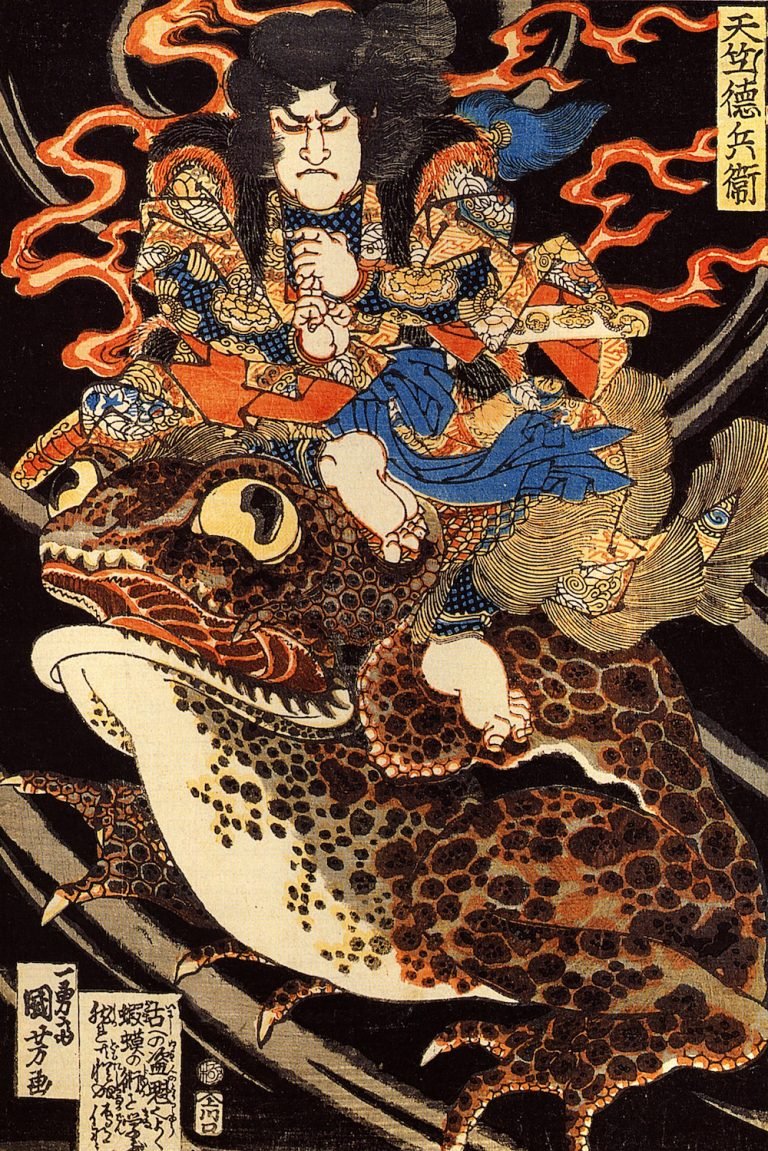
Actor Onoe Tamizô II as Tenjiku Tokubei Artist Utagawa Kunisada I (Toyokuni III) (Japanese, 1786–1864), Publisher Kawaguchiya Uhei (Fukusendô) (Japanese) 1841 (Tenpô 12), 7th month.
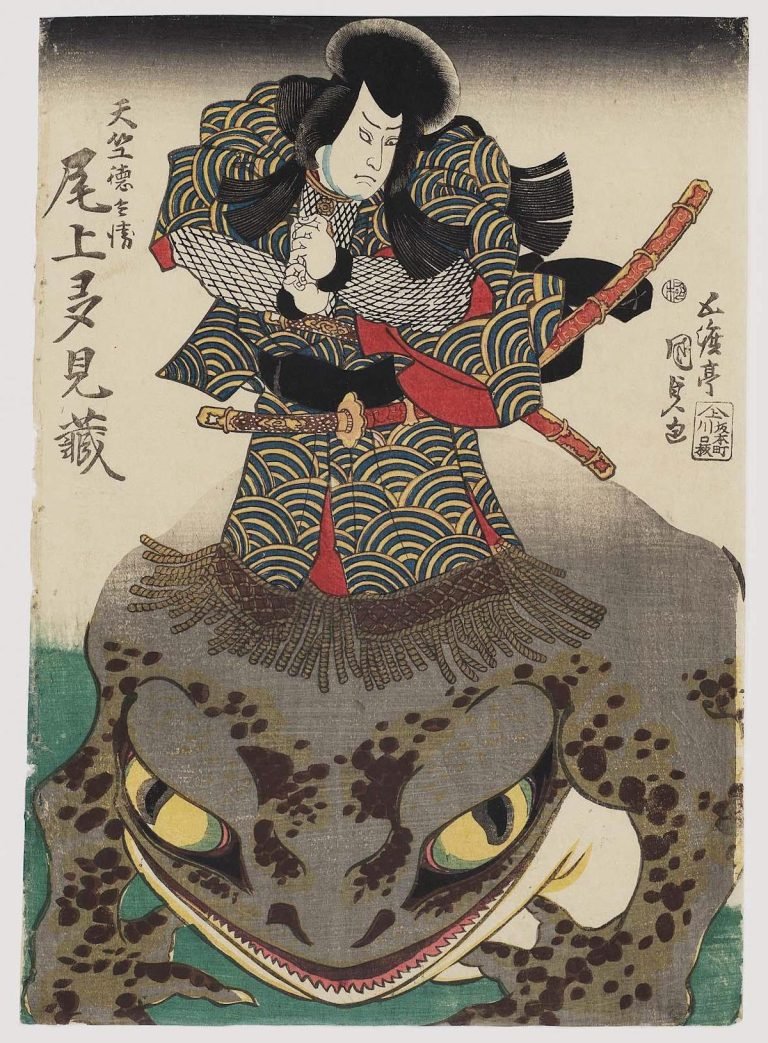
Actor Onoe Eizaburo I as a Magician with a Giant Toad Woodblock print.
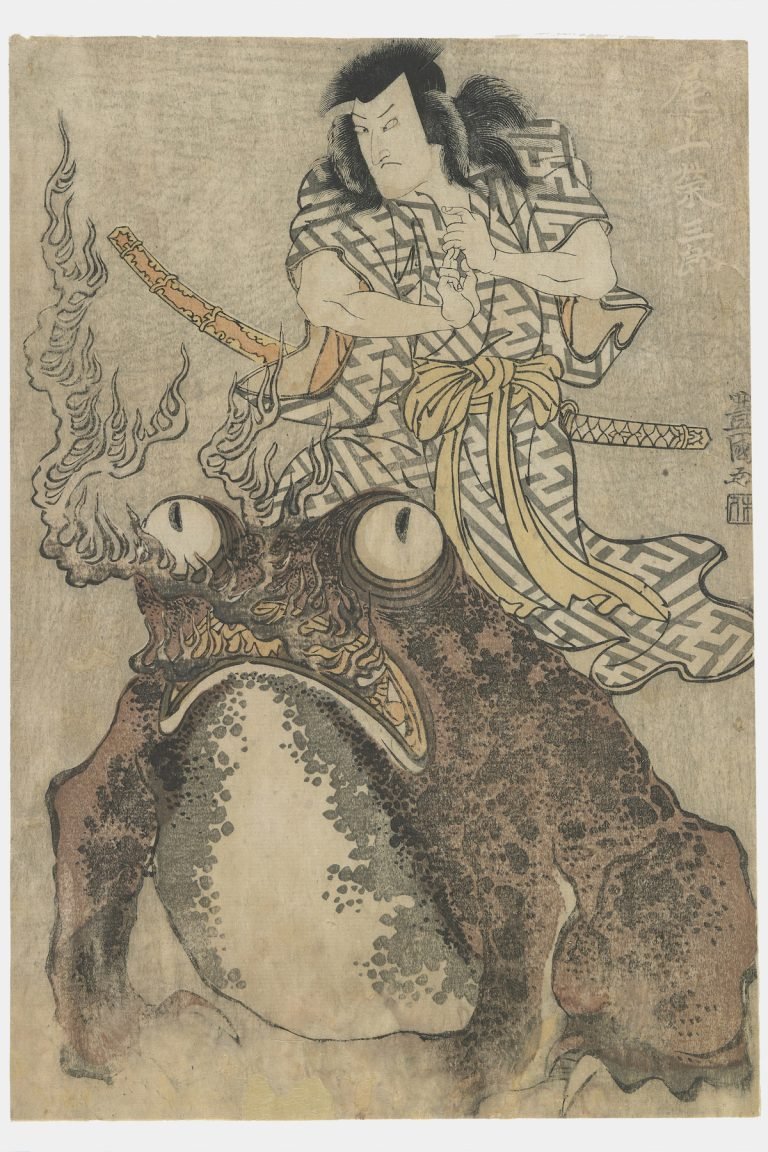
Toad Magic (with invisible ink) – 蝦蟇の妖術(あぶりだし絵、透明インク. Artist unknown, Japan.
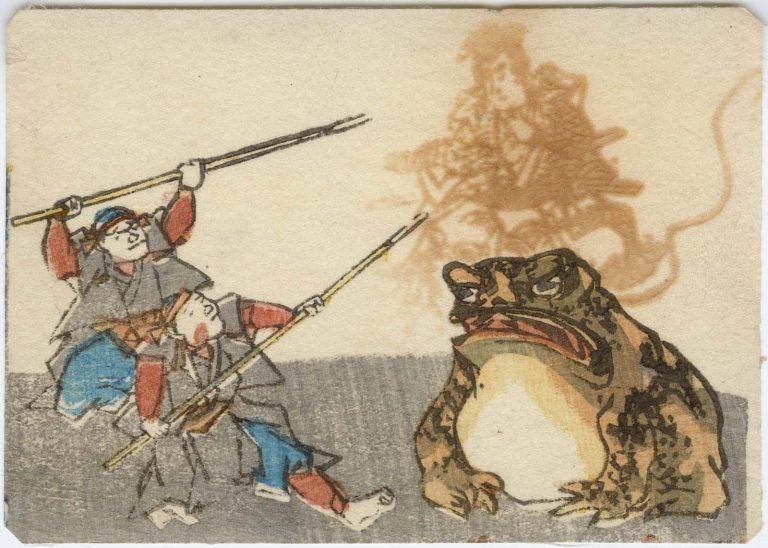
Frog by Japanese artist Matsumoto Hoji from Meika Gafu, 1814
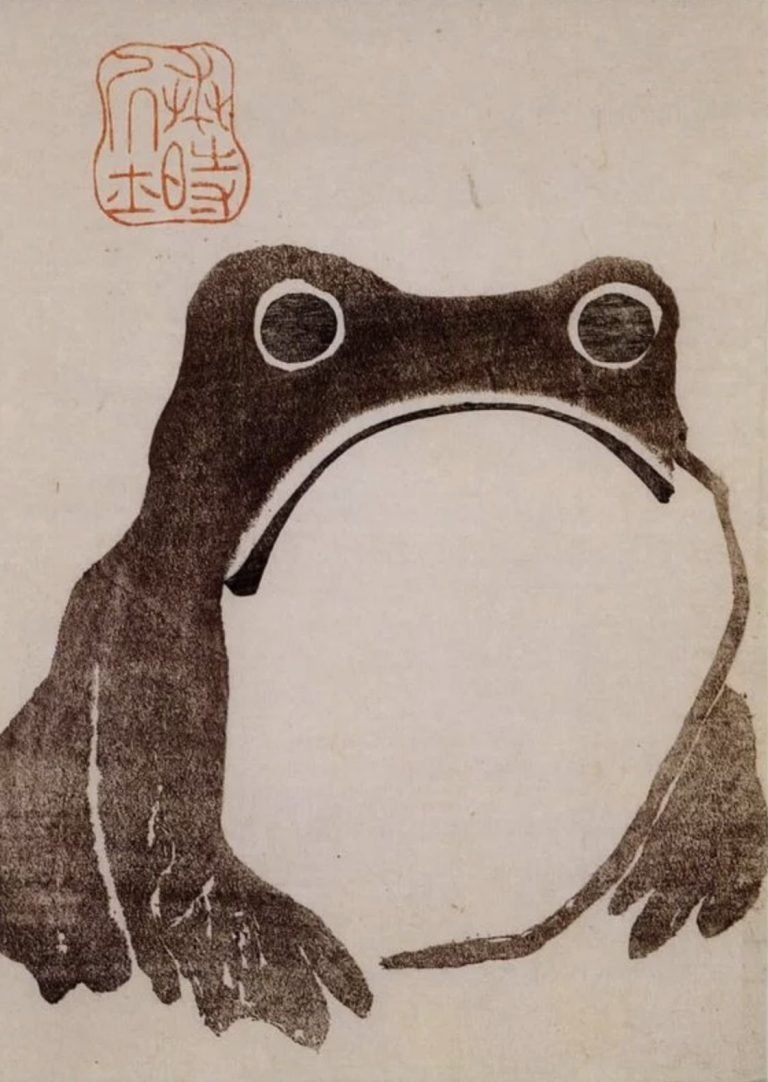
Toad and Mouse, late 18th – early 19th century Getsuju.
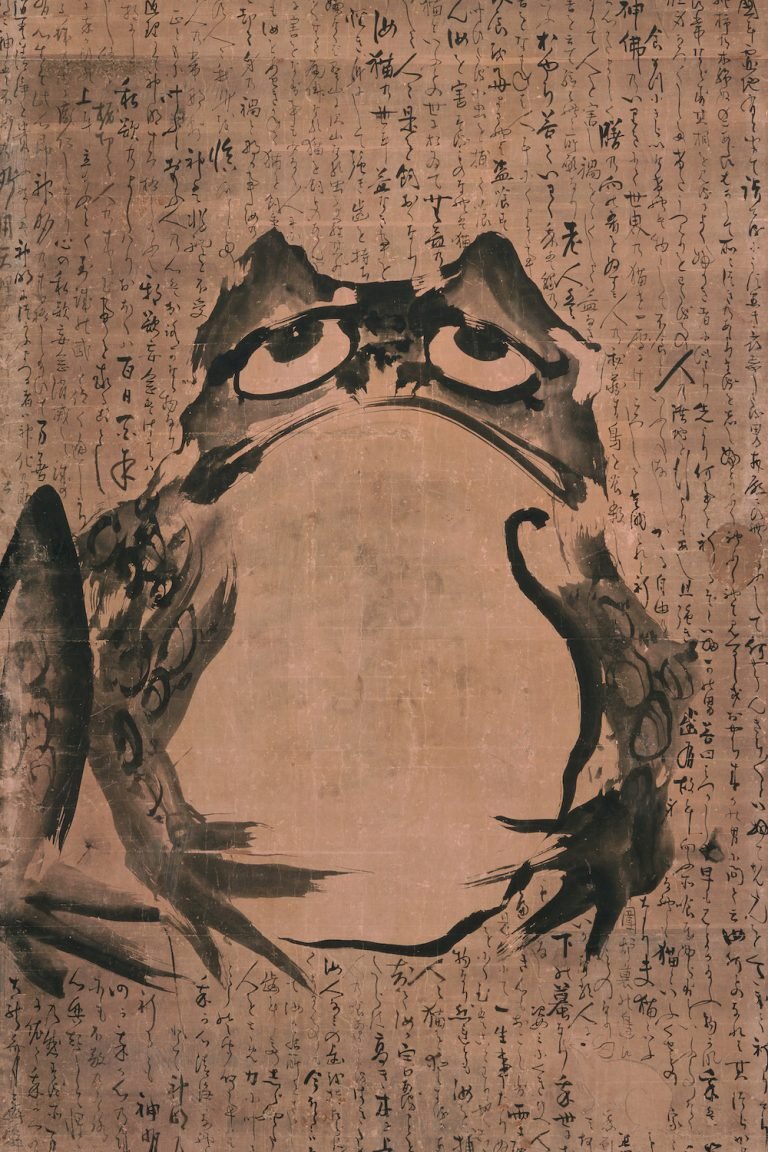
The Meditating Frog is a painting by the Japanese monk Sengai Gibon (1750–1837 CE), Edo period.
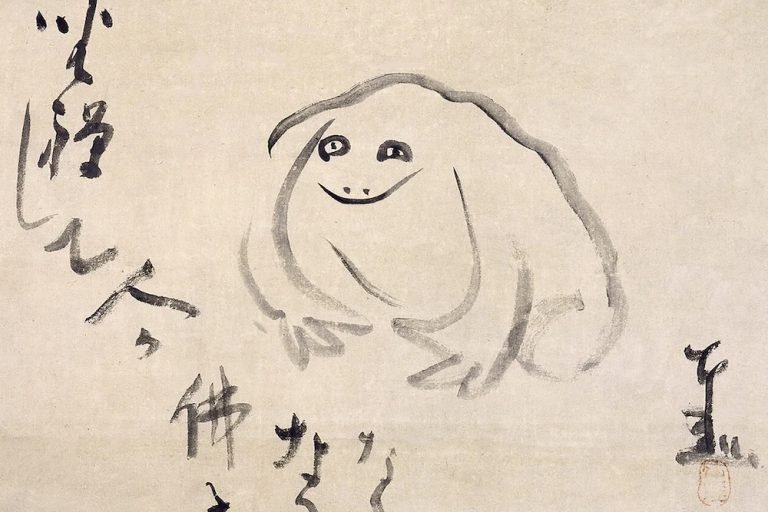
Sumō wrestling toads by Ohara Hōson 1930.
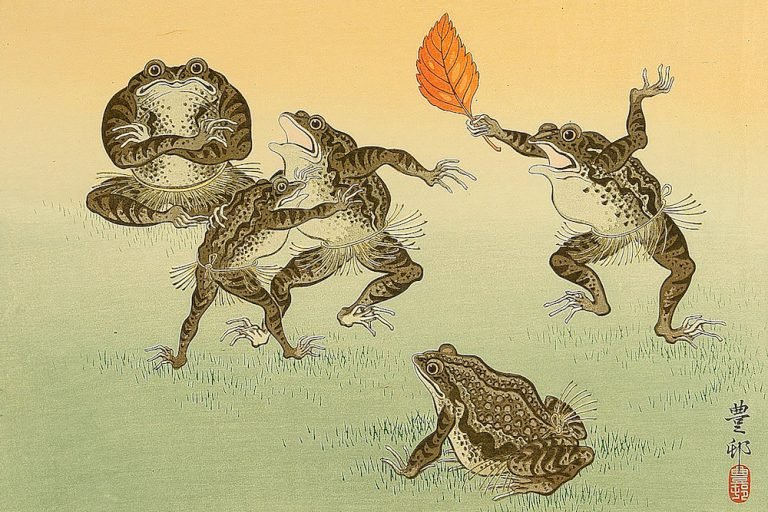
Frogs in Sumo Match, early 19th century Mori Shūhō
